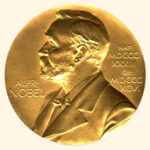About Us
Calling all physics educators, researchers, and visionary dreamers.
The Contemporary Physics Education Project is a non-profit organization consisting of teachers, educators, and physicists. CPEP materials present the current understanding of the fundamental nature of matter and energy, incorporating the major research findings of recent years. For more than 30 years, CPEP has distributed almost half a million copies of its charts and other products.
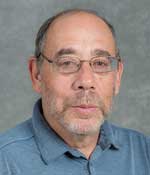
HOWARD MATIS
PRESIDENT
The Contemporary Physics Education Project (CPEP) is an organization of physicists and educators dedicated to create attractive and up-to-date materials that describe several subfields of physics. Since 2012, CPEP’s president has been Howard S. Matis, Ph.D. Dr. Matis received his B.S. in physics from Rensselaer Polytechnic Institute (N.Y.) in 1970. He received both his M.S. and his Ph.D. in physics from The University of Chicago (Ill.), in 1971 and 1976, respectively, and completed his postdoctoral fellowship there in 1978, before joining the Los Alamos National Laboratory in New Mexico. In 1983, he joined the Lawrence Berkeley National Laboratory in Berkeley California. Dr. Matis’s scientific research interests have included deep-inelastic electron scattering, rare muon decay, heavy ion physics, and detection of astrophysical neutrinos. A fellow of the American Physical Society (APS), Dr. Matis was a member of the APS Far West from 2007 to 2010, and was its chair in 2009. Dr. Matis began working with CPEP in 1998, serving as vice president for nuclear physics when his group produced the nuclear science poster.
Awards and accomplishments:
Excellence in Physics Education Award 2017
Fellow of American Association for the Advancement of Science 2016
Fellow of American Physical Society 2006
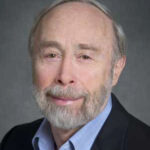
MICHAEL BARNETT
VICE PRESIDENT, FUNDAMENTAL PARTICLES
Michael Barnett is one of the original co-founders of CPEP, and has served as the vice-president for Fundamental Particles and Interactions since its inception. For 25 years, he was head of the 200-member international Particle Data Group. His research has been in theoretical physics on the Standard Model and its extensions, including studies of the nature of Quantum Chromodynamics, analyses of neutral current couplings, calculations of the production of heavy quarks, and studies of the properties of supersymmetric particles and Higgs bosons. Additionally, Barnett served for 16 years as the Education Director for the ATLAS project at the Large Hadron Collider, creating many noteworthy ATLAS-related education products. Barnett’s most recent project is the award-winning planetarium show Phantom of the Universe: The Hunt for Dark Matter, featuring Academy Award winner Tilda Swinton as narrator, and Academy Award winning Skywalker Sound as sound team.
Awards and accomplishments:
Dwight Nicholson Medal for Outreach:
for “a lifetime of innovations in outreach bringing the discoveries and searches of particle physicists and cosmologists to multitudes of students and lay-people around the world,” 2020
Fellow, American Association for the Advancement of Science 2017
Fellow, American Physical Society 1993
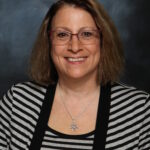
Lynn Cominsky
Vice President, Gravitation
Lynn Cominsky is a Professor in the Physics and Astronomy Department at Sonoma State University (SSU), where she has been on the faculty for almost 35 years. She is an author on over 200 research papers in refereed journals, and the Principal or Co-Investigator on over $33 million of grants to SSU. Prof. Cominsky is the founder and director of SSU’s Education and Public Outreach Group (now renamed EdEon STEM Learning), which develops educational materials for NASA, NSF and the US Department of Education. The group excels at K-12 teacher training, curriculum development, and the development of interactive web activities for students that teach math and science. In 1993, Prof. Cominsky was named SSU’s Outstanding Professor, and the California Professor of the Year by the Council for the Advancement and Support of Education. In 2007, she was named a Fellow of the California Council on Science and Technology, in 2009, a Fellow of the American Physical Society and in 2013, a Fellow of the American Association for the Advancement of Science. Recent awards include the 2016 Education Prize from the American Astronomical Society, the 2016 Wang Family Excellence Award from the California State University and the 2017 Frank J. Malina Education Medal from the International Astronautical Federation. In 2019, she was selected as one of the first 200 Legacy Fellows named by the American Astronomical Society. Her newest NASA project is NASA’s Neurodiversity Network, which aims to develop resources and internships for teens on the autism spectrum
Awards and accomplishments:
Sigma Xi Fellow 2024
Fellow, California State University STEM-Net 2020
Legacy Fellow, American Astronomical Society 2019
Fellow, California Academy of Sciences October 2017
Frank J. Malina Astronautics Medal, International Astronautical Federation, April 2017
CSU Wang Family Excellence Award, January 2016
American Astronomical Society Education Prize January 2016
American Astronautical Society Sally Ride Education Award, December 2015
AAAS Fellow (Astronomy), 2013
Fellow, American Physical Society (Education) 2009
Fellow, California Council on Science and Technology, 2008
Council for Advancement and Support of Education California Professor of the Year Award 1993
Sonoma State University Outstanding Professor Award 1992
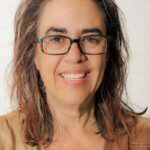
CINDY SCHWARZ
VICE PRESIDENT, EDUCATION OUTREACH AND DIVERSITY
Dr Cindy Schwarz is a Professor of Physics at Vassar College, where she has been teaching since completing her PhD in particle Physics at Yale University. For over 35 years, Schwarz has been an innovator in interactive pedagogies and an author of multiple books and materials that have made an impact on physics education at the undergraduate as well as elementary and high school levels. The first edition of her book, A Tour of the Subatomic Zoo, won the American Library Association Outstanding Academic Book Award and a third edition was published in 2017 as part of the IOP Concise Physics series. Dr. Schwarz received the AAPT David Halliday and Robert Resnick Award for Excellence in Undergraduate Physics Teaching in 2017. She is recognized in her department and in the physics teaching community as an expert in developing innovative/interactive curricula both for physics students and the general public.
Awards and accomplishments:
AAPT Fellow

SAMUEL (SAM) LIGHTNER
G. Samuel (Sam) Lightner received a BS with Honors from Randolph-Macon College in 1965 and a Ph.D. in Physics from the University of Virginia in 1971. He taught physics at Westminster College from 1970 until his retirement in 2008 having served as Department Chair. He was recognized as Professor of the Year in 2003. Lightner joined CPEP in 1992 and has served on the Board of Directors and Vice-President of Fusion/Plasma. He is a past president and section representative for the Western Pennsylvania section of the American Association of Physics Teachers (AAPT) and served on the AAPT national council. His participation in the American Physical Society has included service on the Executive Committee of the Forum on Education, membership in the Education and Outreach Committee of the Division of Plasma Physics (DPP), participation in education and outreach workshops at APS-DPP meetings using CPEP materials for 25 years. In addition, he has conducted many other workshops for teachers featuring CPEP resources.

PEGGY MCMAHAN NORRIS
VICE PRESIDENT, NUCLEAR WEBSITE
Awards and accomplishments:
Kavli Raab Prize, 2008

KATRINA BROWN
VICE PRESIDENT, Fusion
Katrina Brown is an Associate Professor of Physics at the University of Pittsburgh at Greensburg where she has taught since 2002. She received her B.S. in Physics from Purdue University and her Ph.D. in Physics from Vanderbilt University. She has facilitated numerous physics workshops and classes for both teachers and students on four different continents.
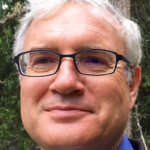
Michael Cherney
Treasurer
Michael Cherney is a Professor Emeritus at Creighton University in Omaha, Nebraska. He graduated with a BS from Marquette University and with a Masters and a PhD from the University of Wisconsin-Madison. He has worked at DESY-Hamburg, Lawrence Berkeley National Laboratory, Brookhaven National Laboratory and CERN. He served as the principal investigator for 25 years on DOE grants studying Nuclear Physics and Renewable Energy. He remains involved with the STAR and ALICE collaborations working on ultra-peripheral nuclear collisions and hardware control systems. Dr. Cherney has shepherded more than 300 Boy Scouts through the Nuclear Science merit badge. He was made an Admiral in the Nebraska Navy by the governor in recognition of his work on energy policy.

Glen MelNik
SECRETARY
Glen Melnik has been teaching for his entire life. After obtaining a Masters degree from Northwestern University, Glen developed private tutoring services in math, chemistry, and physics for 14 years. Then, for the next 20 years, Glen taught High School physics. During this time and up to the present, he has participated in a summer cosmology workshop sponsored by Berkeley National Labs, where he gave lectures and ran experiments on cosmic ray detection. On the weekends, Glen has also worked as a charter captain and sailing instructor on the San Francisco Bay. When he retired from being a high school teacher, Glen joined the staff of CPEP as their secretary.
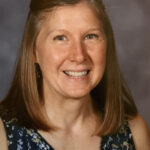
Cheryl (Cherie) Harper
Board Chair
Cherie Harper earned her bachelor’s degrees in Physics and Mathematics, as well as a master’s degree in Curriculum and Instruction from Saint Vincent College in Latrobe, Pennsylvania. Since 1988, she has been a public high school instructor, teaching AP Physics 1, AP Physics 2, Engineering, Honors Modern Physics, and Astrophysics & Astronomy at Greensburg Salem High School in Greensburg, PA. In addition to completing science workshops at Penn State University, Carnegie Mellon University, and the Kavli Institute for Theoretical Physics, she has presented teacher workshops at APS-DPP meetings. Cherie has been involved with the Contemporary Physics Education Project since 2003.
Other Member Accomplishments
Gordon Aubrecht:
Fellow of American Physical Society
Rush Holt:
U.S. Representive
Peggy McMahan:
Fellow of American Physical Society
Helen Quinn:
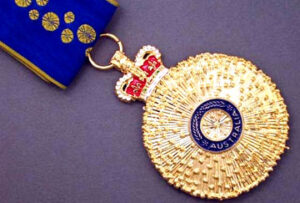
Officer of the Order of Australia 2007
The Order of Australia is an order of chivalry established by Elizabeth II "for the purpose of according recognition to Australian citizens and other persons for achievement or for meritorious service".
Fellow of American Physical Society
President of the American Physical Society, 2004
National Academy of Sciences, 2003
Dirac Medal 2000
Michael Riordan:
Guggenheim Fellowship 1999
Sally Hacker Price of the Society for the History of Technology 1999
Andrew Gemant Award of the American Institute of Physics 2002
George Smoot:
Ted Zaleskiewicz:
Fellow of American Physical Society
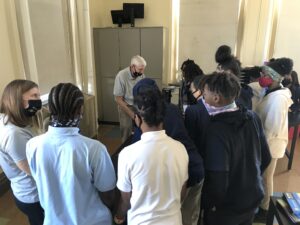
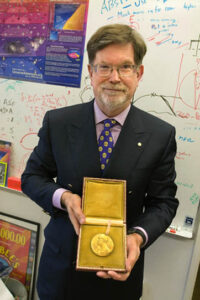
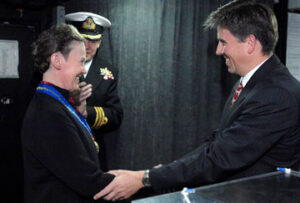
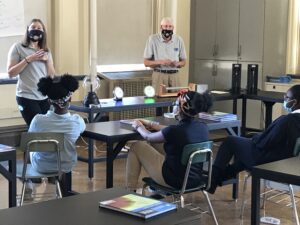
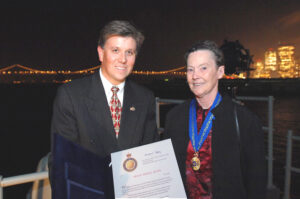
Our members create and distribute educational materials for physics classrooms. Our posters make the complex simple to inspire the next generation of physicists.

